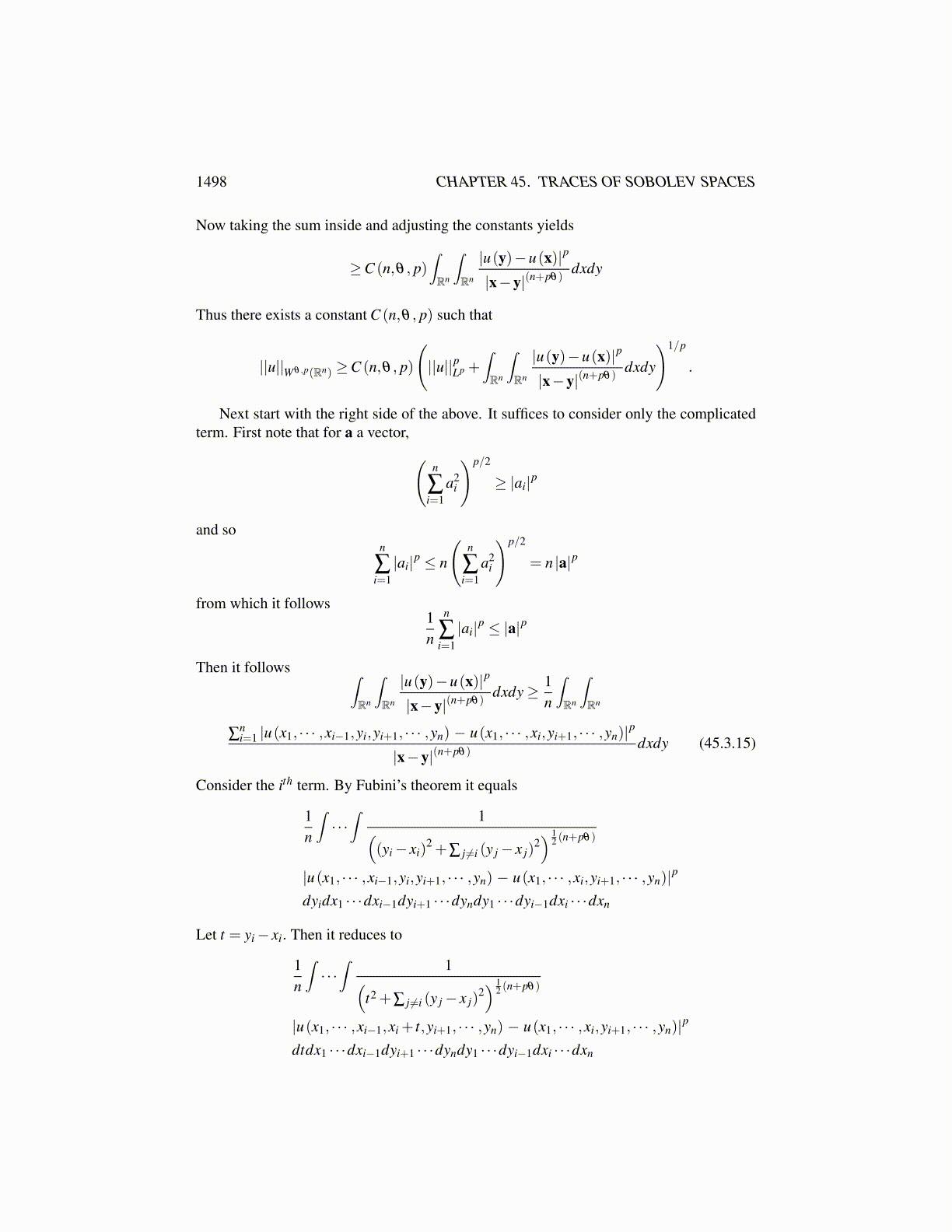
1498 CHAPTER 45. TRACES OF SOBOLEV SPACES
norm preserving isomorphism between W θ ,p (Rn) and this closed subspace of Lp (Rn)×Y n.Since Lp (Rn) and Y is reflexive, their product is reflexive. By Lemma 21.2.7 on Page 655it follows
(id, ∆⃗
)(W θ ,p (Rn)
)and hence W θ ,p (Rn) is reflexive. This proves the theorem.
One can generalize this to find an intrinsic norm for W θ ,p (Ω). The version given abovewill not do because it requires the function to be defined on all of Rn in order to make senseof the shift operators Gi. However, you can give a different version of this intrinsic normwhich will make sense for Ω ̸= Rn.
Lemma 45.3.9 Let t ̸= 0 be a number. Then there is a constant C (n,θ , p) depending onthe indicated quantities such that∫
Rn−1
1(t2 + |s|2
) 12 (n+pθ)
ds =C (n,θ , p)
|t|1+pθ
Proof: Change the integral to polar coordinates. Thus the integral equals∫Sn−1
∫∞
0
ρn−2
(t2 +ρ2)12 (n+pθ)
dρdσ
Now change the variables, ρ = |t|u. Then the above integral becomes
Cn
∫∞
0
|t|n−2 un−2 |t|
|t|n+pθ (1+u2)12 (n+pθ)
du
=Cn1
|t|1+pθ
∫∞
0
un−2
(1+u2)12 (n+pθ)
du≡ C (n,θ , p)
|t|1+pθ.
This proves the lemma.Now let u ∈W θ ,p (Rn) . This means the norm of ||u||p
W θ ,p can be taken as
||u||pLp +n
∑i=1
∫∞
0|t|(1−θ)p
∫Rn
∣∣∣∣u(x+ tei)−u(x)t
∣∣∣∣p dxdt|t|
= ||u||pLp +12
n
∑i=1
∫∞
−∞
|t|(1−θ)p∫Rn
∣∣∣∣u(x+ tei)−u(x)t
∣∣∣∣p dxdt|t|
That integral over Rn can be massaged and one obtains the above equal to
||u||pLp +
12
n
∑i=1
∫∞
−∞
∫Rn−i
∫Ri
1t1+pθ
|u(x1, · · · ,xi + t,yi+1, · · · ,yn)
− u(x1, · · · ,xi,yi+1, · · · ,yn)|p dxidyn−idt